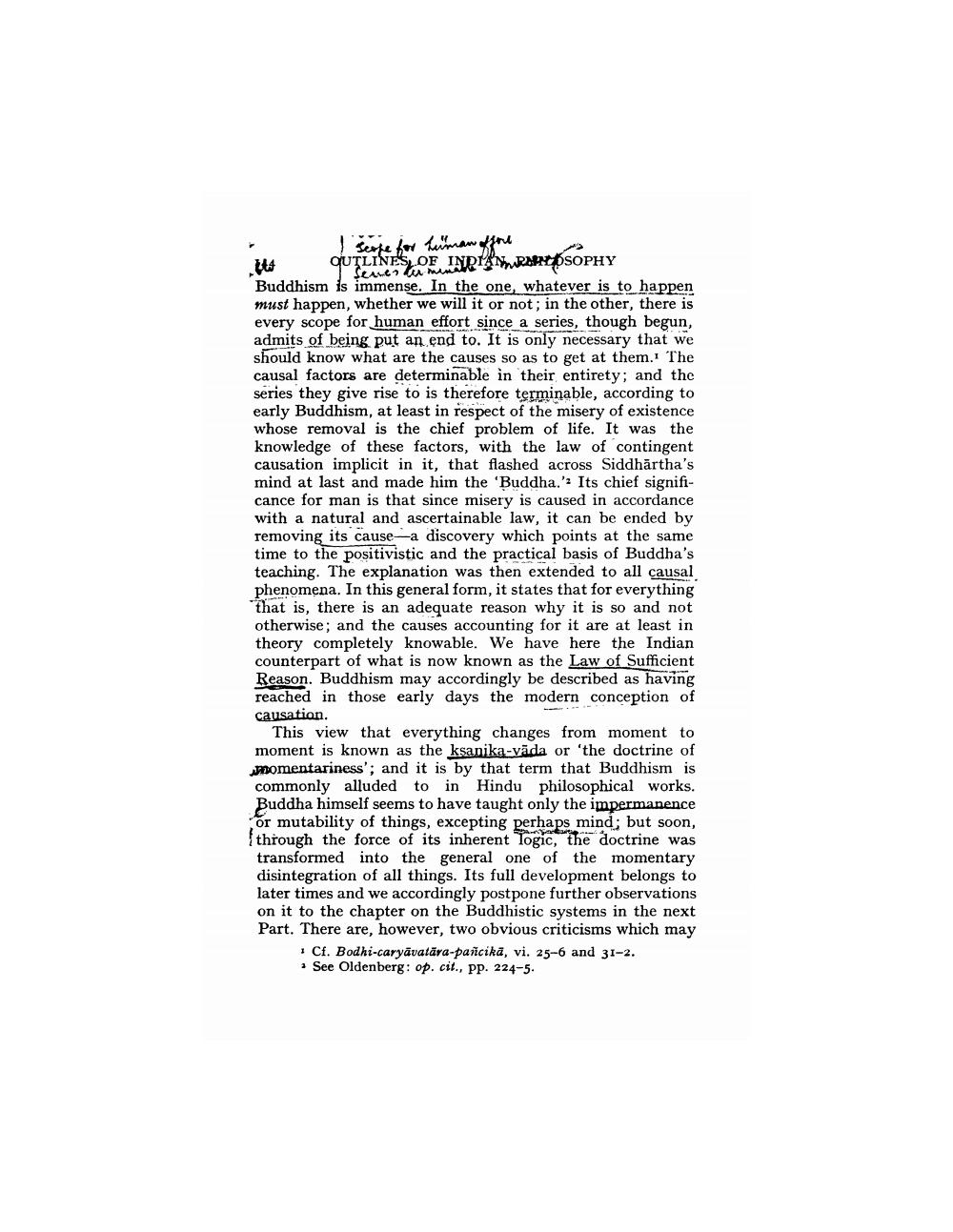________________
U QUTLINES OF INRIAN RAPSOPHY
1 Slunes a Mare Buddhism is immense. In the one, whatever is to happen must happen, whether we will it or not; in the other, there is every scope for human effort since a series, though begun, admits of being put an end to. It is only necessary that we should know what are the causes so as to get at them. The causal factors are determinable in their entirety; and the series they give rise to is therefore terminable, according to early Buddhism, at least in respect of the misery of existence whose removal is the chief problem of life. It was the knowledge of these factors, with the law of contingent causation implicit in it, that flashed across Siddhārtha's mind at last and made him the 'Buddha.'? Its chief significance for man is that since misery is caused in accordance with a natural and ascertainable law, it can be ended by removing its cause--a discovery which points at the same time to the positivistic and the practical basis of Buddha's teaching. The explanation was then extended to all causal phenomena. In this general form, it states that for everything that is, there is an adequate reason why it is so and not otherwise; and the causes accounting for it are at least in theory completely knowable. We have here the Indian counterpart of what is now known as the Law of Sufficient Reason. Buddhism may accordingly be described as having reached in those early days the modern conception of causation.
This view that everything changes from moment to moment is known as the ksanika-vāda or 'the doctrine of momentariness'; and it is by that term that Buddhism is commonly alluded to in Hindu philosophical works. Buddha himself seems to have taught only the impermanence or mutability of things, excepting perhaps mind; but soon, through the force of its inherent logic, the doctrine was transformed into the general one of the momentary disintegration of all things. Its full development belongs to later times and we accordingly postpone further observations on it to the chapter on the Buddhistic systems in the next Part. There are, however, two obvious criticisms which may
Cf. Bodhi-caryāvatāra-pancika, vi. 25-6 and 31-2. * See Oldenberg: op. cit., PP. 224-5.




